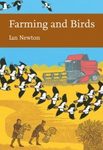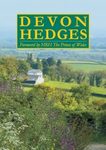Out of Print
Edited By: Hadrian Cook and Tom Williamson
160 pages, 25 colour illus, 25 b&w illus
![Water Meadows Water Meadows]()
Click to have a closer look
About this book
Contents
Biography
Related titles
About this book
This book brings to public attention some of the most evocative and threatened features of the landscape of southern England. Water meadows work with nature to improve agricultural productivity, whilst providing rich habitats for wildlife such as water voles, waders and grass snakes. They are areas of low-lying grassland which are regularly `drowned' - artificially irrigated - at certain times of the year, to stimulate the early growth of grass in the spring. Only a few remain in operation today, though they played a crucial role in Britain's past farming economy. Their archaeological remains can be found all over southern England, with Hampshire and Wiltshire having perhaps the best surviving examples.
In this book leading archaeologists and scientists - together with one of the last practising `drowners' - explore the ecology and history of water meadows. They ask when and where the art of `floating' originated, and explain its hydrology. They also investigate water meadows' conservation status and potential for the future.
Contents
Introducing Water Meadows - Tom Williamson and Hadrian Cook; The Floated Water Meadows of Wessex: A Triumph of English Agriculture - Joe Bettey; The Archaeology of Water Meadows - Christopher Taylor; Floating in Context: Meadows in the Long Term - Tom Williamson; The Later History of Water Meadows - Hadrian Cook and Tom Williamson; Drowning by Numbers: The Functioning of Bedwork Water Meadows - Roger L. Cutting and Ian Cummings; The Effects of Floating on Plant Communities - Ian Cummings and Roger L. Cutting; The Hydrology, Soils and Geology of the Wessex Water Meadows - Hadrian F. Cook; The Management of Water Meadows: Four Hundred Years of Intensive Integrated Agriculture - Kathy Stearne; Water Meadow Management Today: The Practitioner's View - Peter Martin and Kathy Stearne;Agri-Environment Schemes and Water Meadow Conservation - Kathy Stearne and Andrew Fielder; Conclusion - Tom Williamson and Hadrian Cook; Bibliography; Index
Customer Reviews
Biography
Hadrian Cook is a hydrologist and soil scientist with wide interests in landscape history: he is currently Development and Education Officer for the Harnham Water Meadows Trust. Tom Williamson is Reader in Landscape History at the University of East Anglia.
Out of Print
Edited By: Hadrian Cook and Tom Williamson
160 pages, 25 colour illus, 25 b&w illus


































